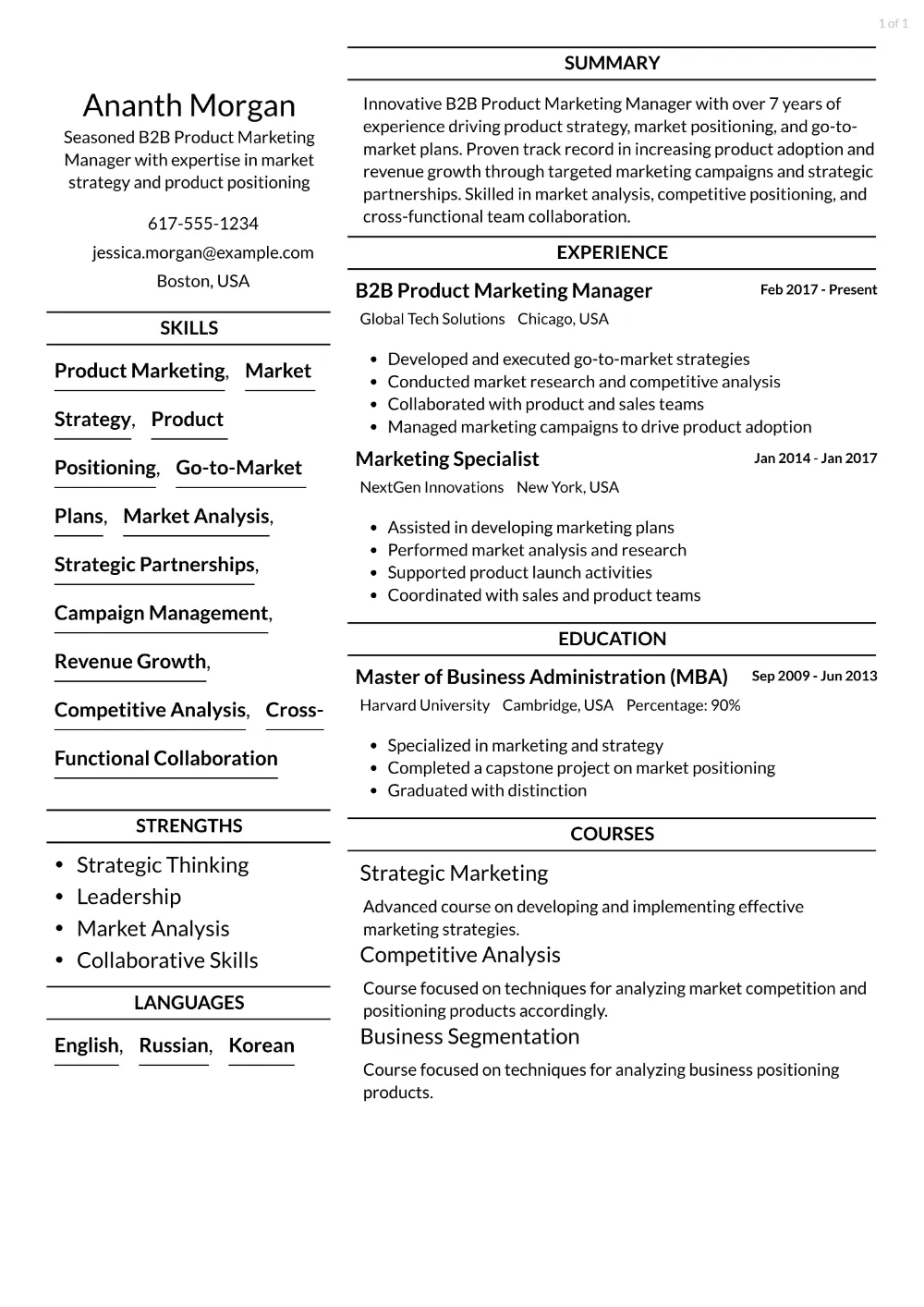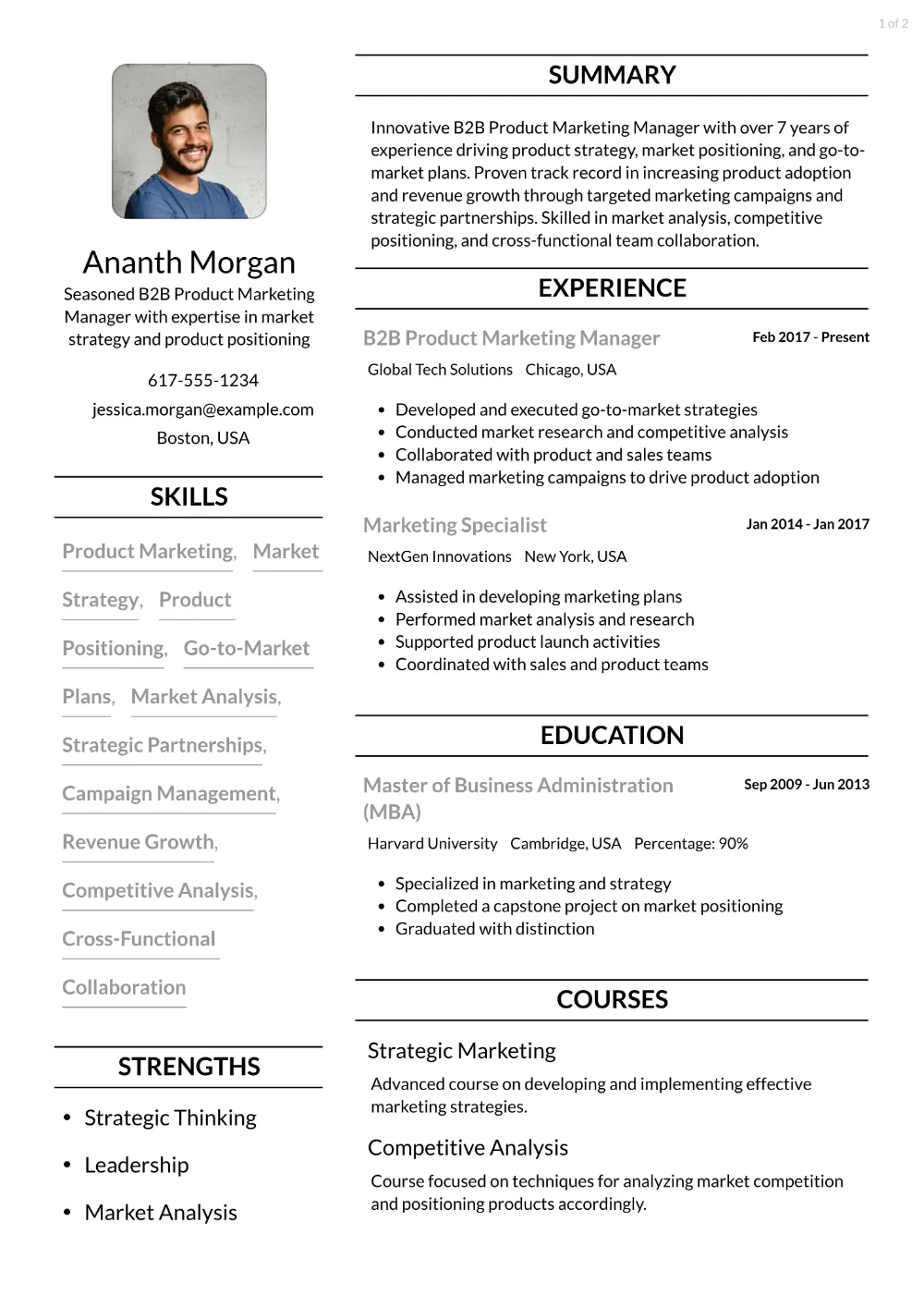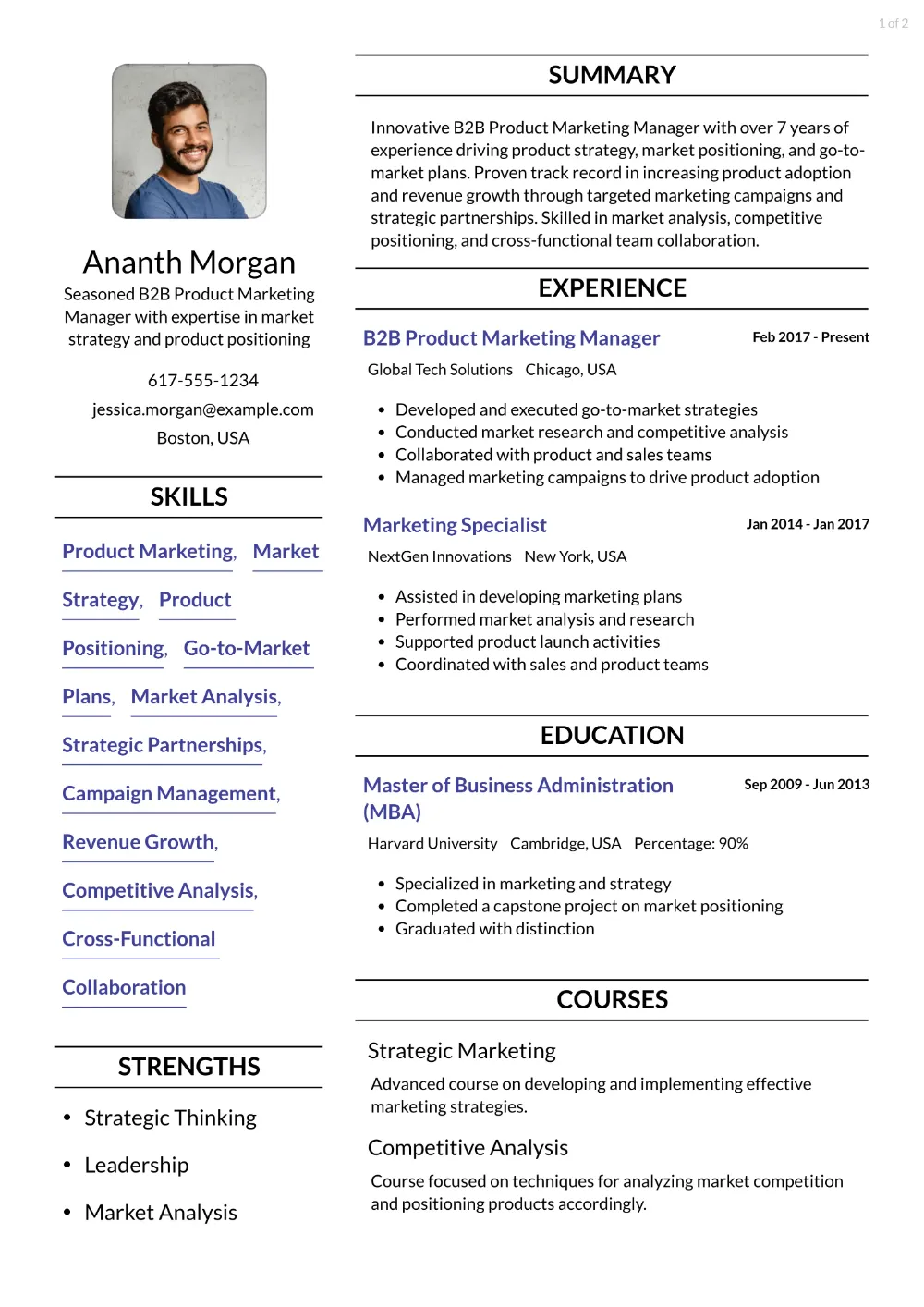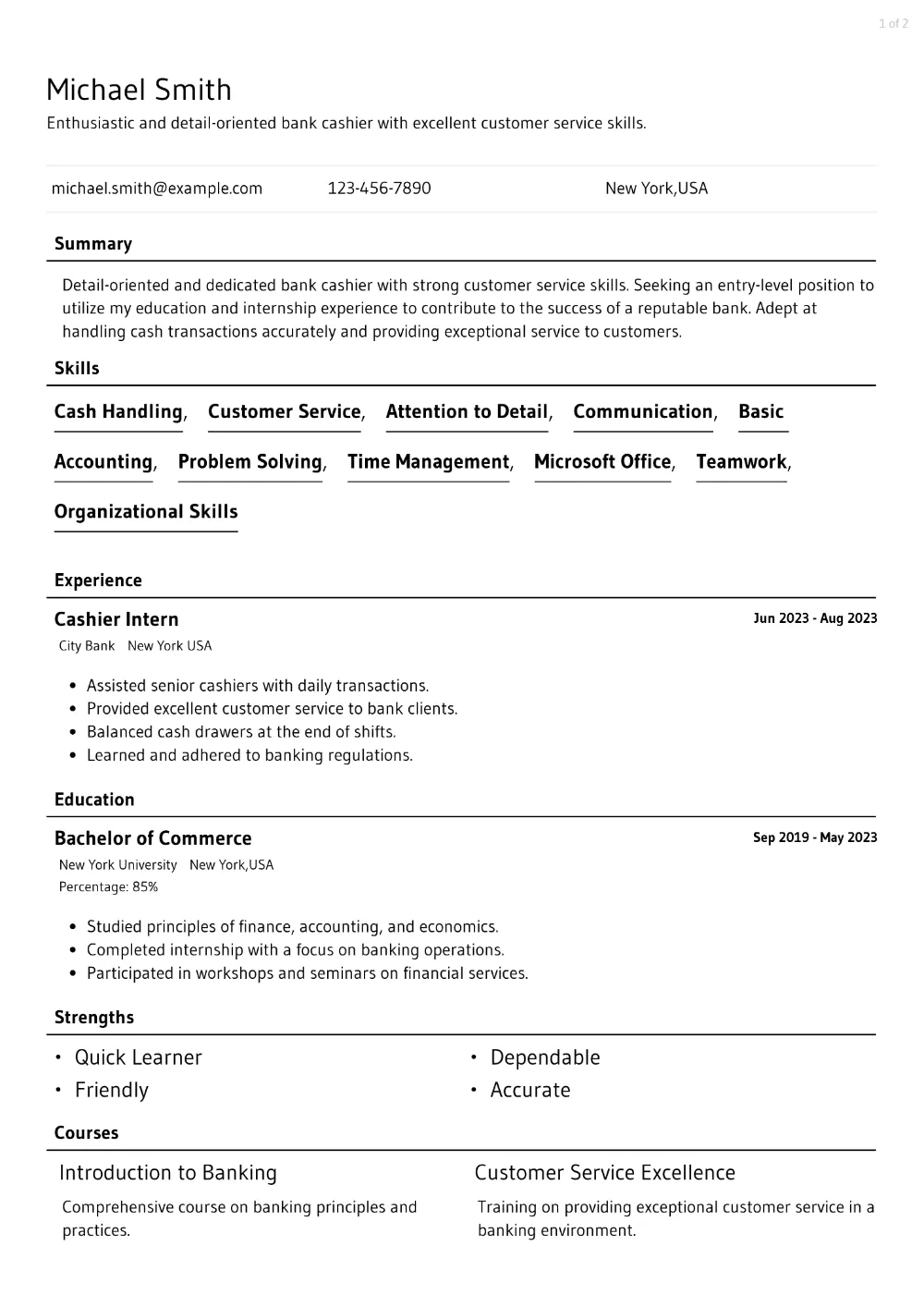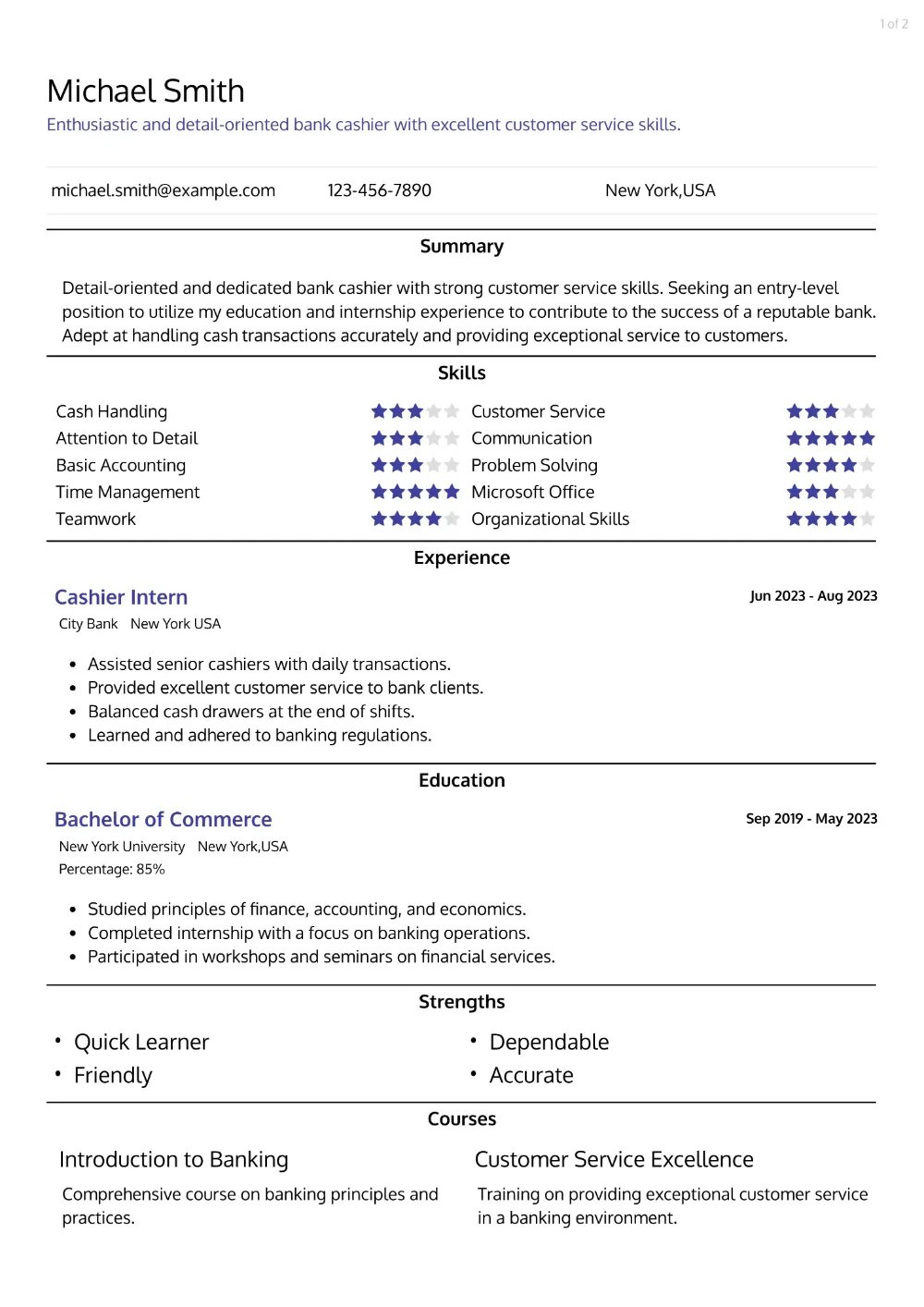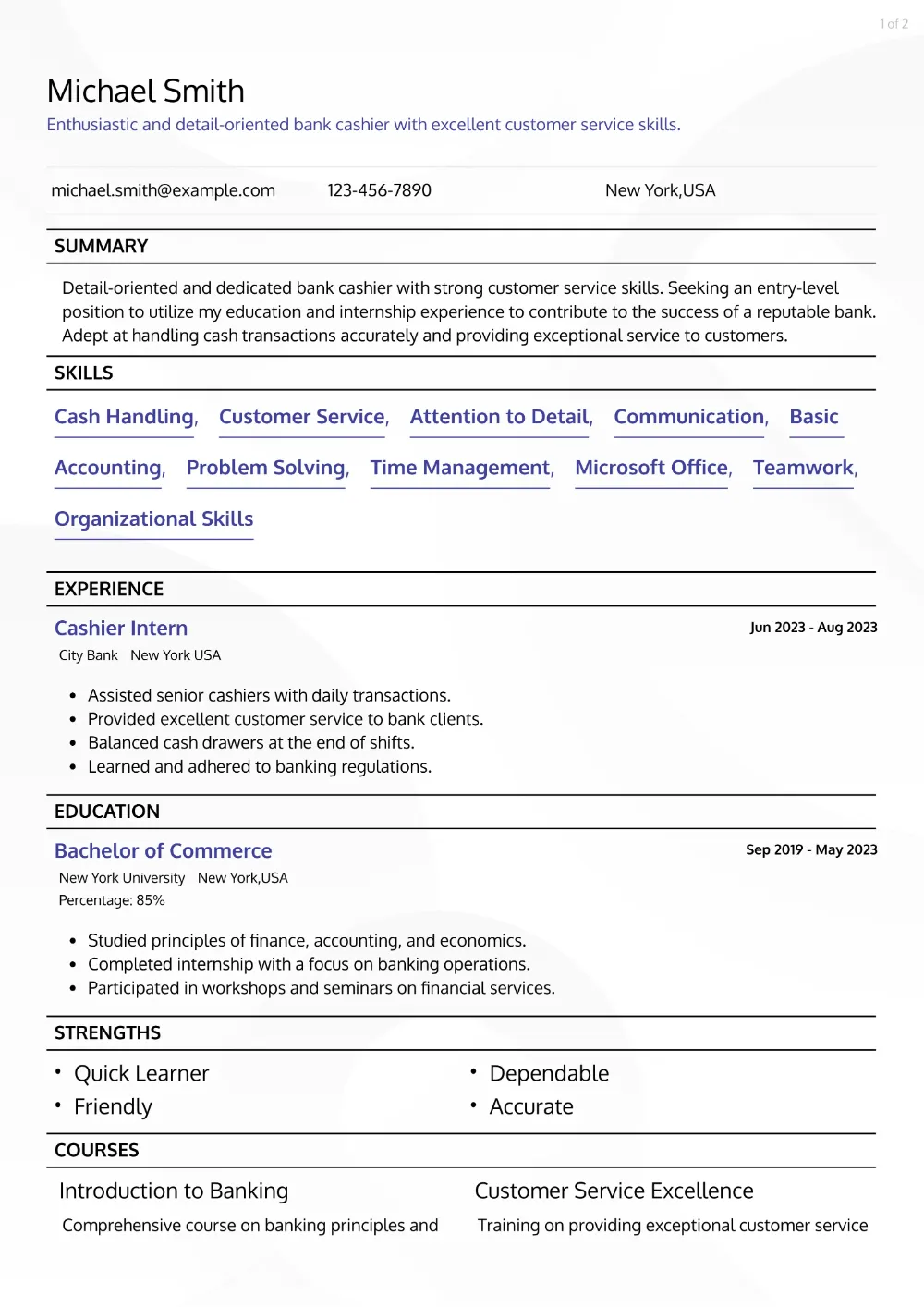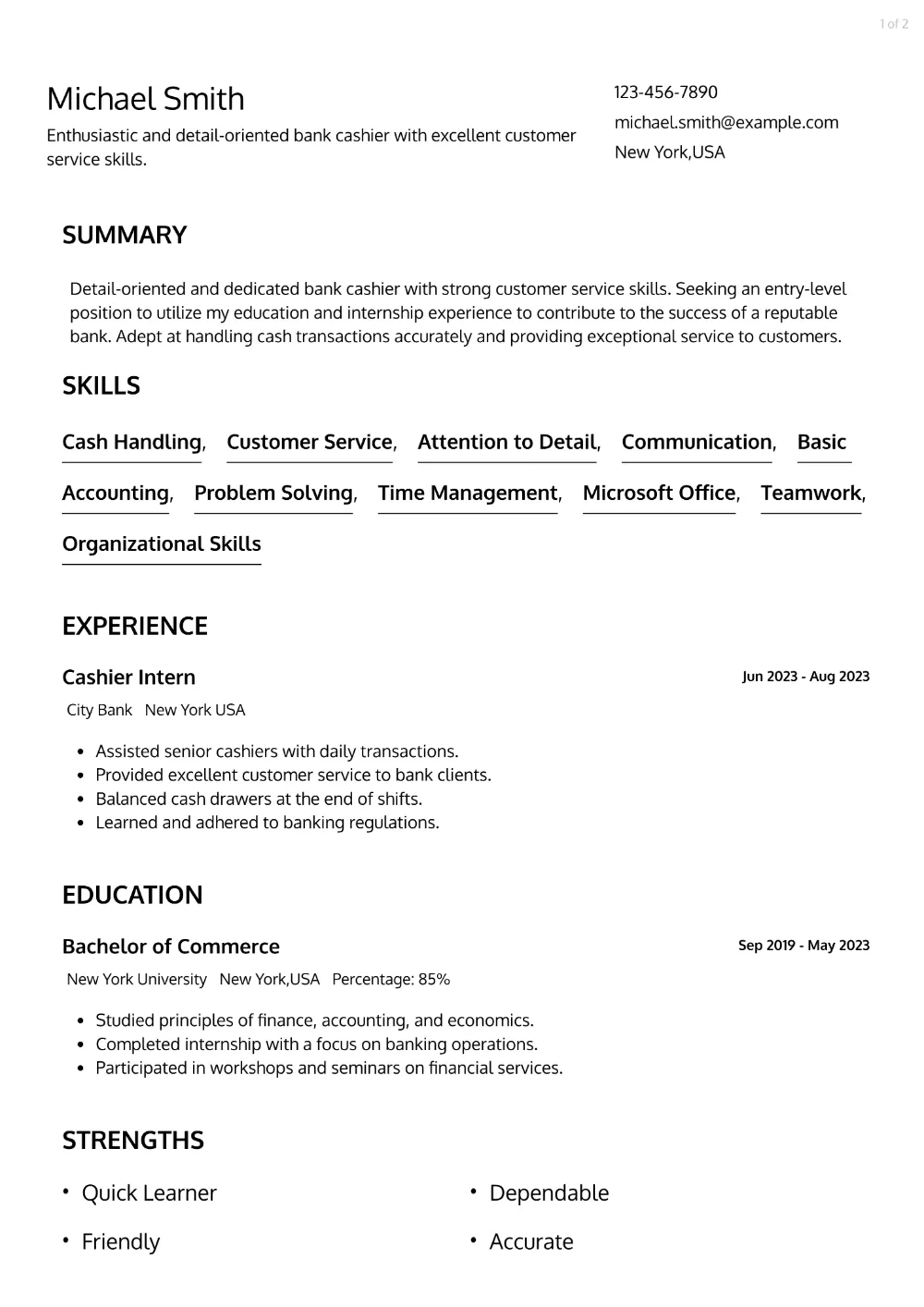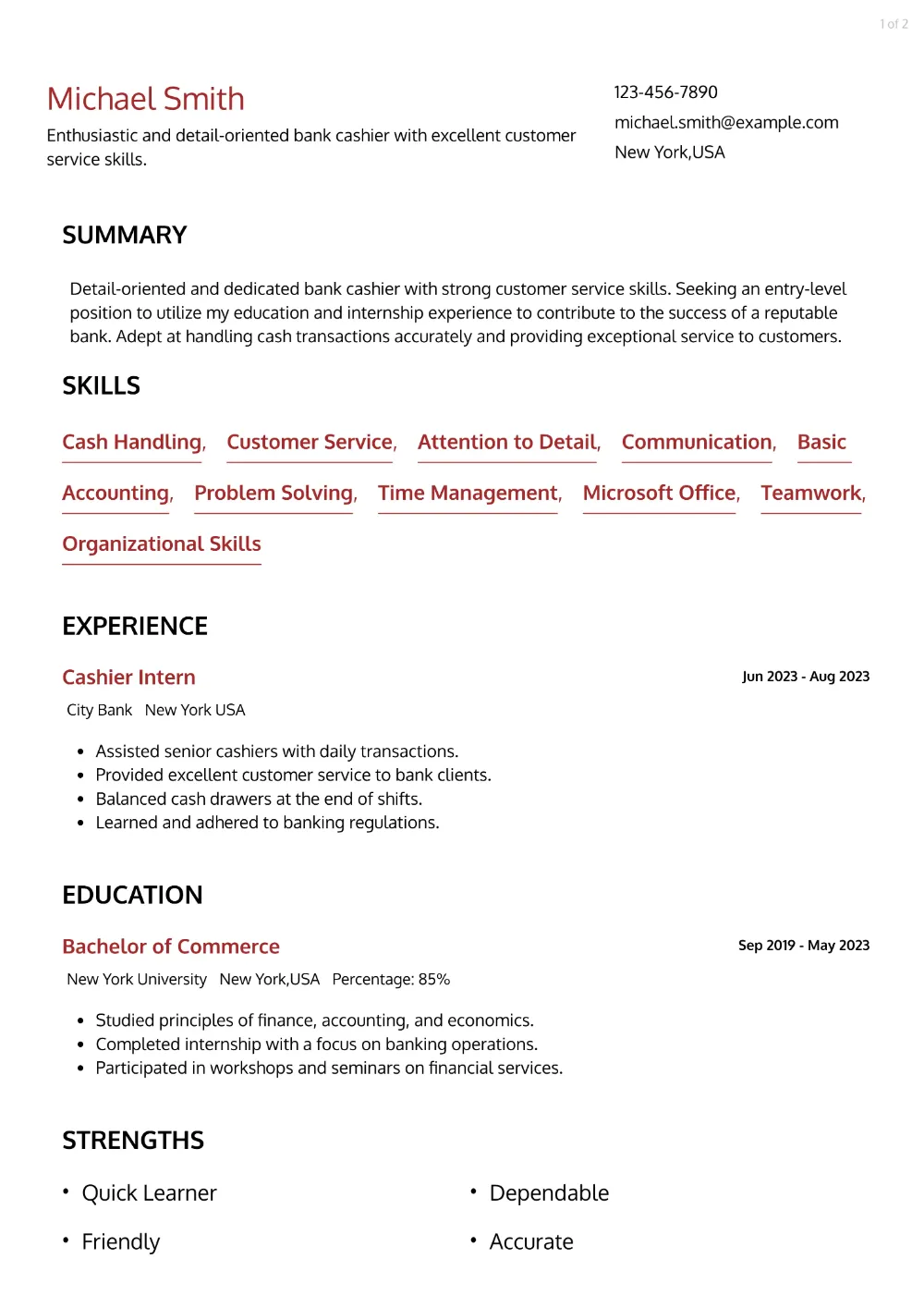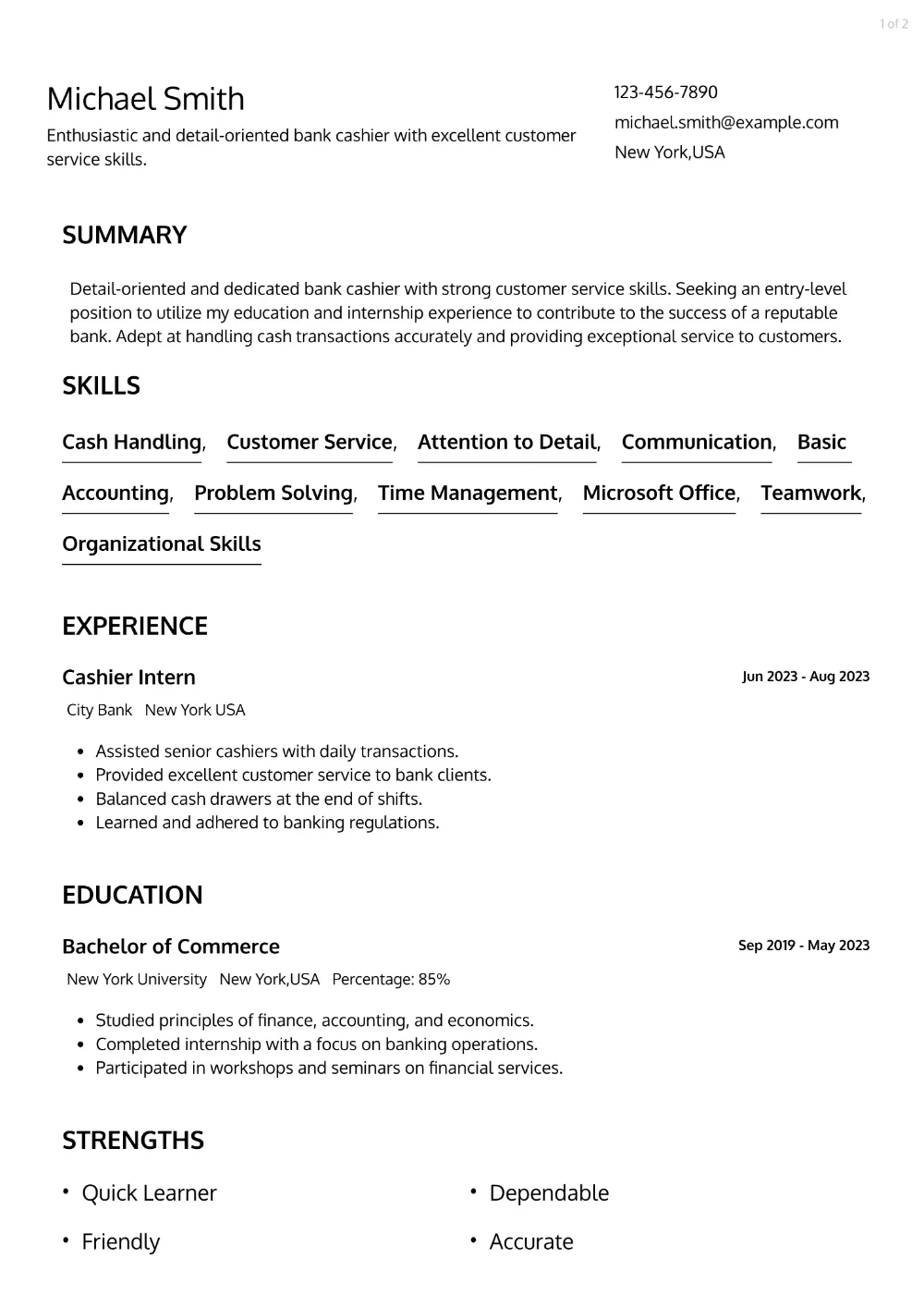Understanding the Traditional Resume Template
A traditional resume template focuses on clarity, organization, and professionalism. It follows a classic structure that prioritizes readability and straightforward presentation of your qualifications.
This type of resume typically uses a clean layout with standard fonts and simple formatting to ensure that your work experience, education, and skills are easily accessible to hiring managers.
At resumes.wiki, our traditional resume templates offer a timeless design that is perfect for professionals in conservative industries or for those who prefer a no-nonsense approach to their job applications. These templates emphasize content over style, ensuring your achievements and qualifications take center stage.
When and Why to Use a Traditional Resume
A traditional resume is often the best choice for industries that value formality and precision, such as finance, law, education, and government positions. It’s also suitable for any job application where a straightforward, professional presentation is preferred.
You Should Use A Traditional Resume Layout To:
- Demonstrate your professionalism and adherence to industry standards.
- Appeal to employers in conservative or formal industries.
- Ensure your resume is easy to read and quickly scannable.
- Present your qualifications in a structured, organized manner.
Traditional Resumes or Contemporary Resumes
While traditional and contemporary resumes both aim to effectively present your qualifications, they differ in style and design. Traditional resumes stick to a classic format with minimal design elements, focusing on a clean and professional look. In contrast, contemporary resumes may incorporate modern design features such as subtle colors, unique fonts, and varied layouts.
At resumes.wiki, we offer both traditional and contemporary templates, allowing you to choose the style that best fits your industry and personal preference.
Elements Of A Traditional Resume
A traditional resume includes several key elements that ensure it is professional and easy to read:
- Clear Headers: Each section, such as “Experience,” “Education,” and “Skills,” should have a clear, straightforward header.
- Consistent Formatting: Use uniform font styles and sizes throughout the resume to maintain a clean look.
- Bullet Points: Utilize bullet points to list job responsibilities and achievements concisely.
- Black and White or Minimal Color: Stick to black and white, or use very minimal color accents to maintain a professional appearance.
- Professional Fonts: Choose basic, legible fonts such as Times New Roman, Arial, or Calibri.
Traditional Resume Layout
The layout of a traditional resume is designed to present information logically and efficiently. Here’s how to structure it:
- Header: Start with your name and contact information at the top. This should be easy to find and read.
- Summary or Objective: A brief statement that highlights your professional background or career goals.
- Experience: List your work history in reverse chronological order. Use bullet points to describe your roles and achievements.
- Education: Clearly present your educational background, including degrees and any relevant coursework or honors.
- Skills: A section dedicated to your key skills, particularly those relevant to the job you’re applying for.
- Optional Sections: Depending on your background, you might include sections for certifications, volunteer work, or languages spoken.
Using a traditional resume template from resumes.wiki ensures that your resume is easy to read and professionally presented. Our templates are designed to highlight your qualifications effectively, making a strong impression without unnecessary distractions.
Ready to create a professional and straightforward resume? Explore our range of traditional templates at resumes.wiki and streamline your job application process with confidence.
Color & Its Combinations For A Traditional Resume
In a traditional resume, color usage is minimal and conservative. The primary focus is on readability and professionalism. Classic black and white is always a safe bet, but if you want to add a touch of color, consider subtle shades like navy, dark gray, or burgundy for headings or section dividers. These colors add a slight visual interest without distracting from the content.
At resumes.wiki, our traditional resume templates use tasteful color accents to enhance the design while maintaining a professional look. You can customize these accents to align with your personal style or industry standards.
Traditional Resume Fonts & Typography
Fonts play a crucial role in the readability and overall presentation of a traditional resume. Stick to clean, professional fonts like Times New Roman, Arial, Calibri, or Garamond. These fonts are easy to read and convey a sense of professionalism.
Our templates at resumes.wiki are designed with optimal font choices in mind, ensuring that your resume is both aesthetically pleasing and easy to read. You can customize font sizes for different sections, but it’s best to keep it consistent and avoid overly large or small text.
Unique Design Elements Of Traditional Resumes
While traditional resumes prioritize simplicity and clarity, there are still unique design elements that can help your resume stand out:
- Consistent Formatting: Maintain uniform font styles and sizes throughout your resume.
- Clear Headers: Use bold or slightly larger fonts for section headers to guide the reader.
- Bullet Points: Organize information with bullet points for easy scanning.
- Margins and Spacing: Ensure there is enough white space to make the resume look uncluttered and professional.
- Minimalist Lines and Borders: Use simple lines or borders to separate sections subtly.
These elements, available in resumes.wiki templates, help create a polished and professional resume that highlights your qualifications effectively.
How Do You Write A Traditional Resume?
Writing a traditional resume involves structuring your information clearly and concisely. Here’s a step-by-step guide:
- Start with a Header: Include your name, contact information, and possibly a LinkedIn profile or portfolio link.
- Craft a Summary or Objective: Write a brief statement summarizing your professional background and career goals.
- Detail Your Experience: List your work history in reverse chronological order, using bullet points to describe your roles and achievements.
- Highlight Education: Present your educational background, including degrees and relevant coursework or honors.
- Showcase Skills: Create a section for your key skills, particularly those relevant to the job you’re applying for.
- Include Additional Sections: Add sections for certifications, volunteer work, or languages spoken if relevant.
Resumes.wiki provides templates that guide you through each step, ensuring your resume is both traditional and effective.
Frequently Asked Questions About Traditional Resume Templates
Q: Are traditional resume templates ATS-friendly?
A: Yes, resumes.wiki templates are designed to be ATS-friendly, ensuring your resume passes automated screening systems.
Q: Can I customize the fonts and colors in a traditional template?
A: Absolutely! While traditional templates use conservative design elements, you can still customize fonts and colors to suit your preferences.
Q: What industries benefit most from traditional resumes?
A: Traditional resumes are ideal for industries like finance, law, education, and government, where professionalism and clarity are highly valued.
Q: How do I know if a traditional resume is right for me?
A: If you’re applying to a formal industry or prefer a straightforward presentation of your qualifications, a traditional resume is a great choice.
What Are the Best Resume Templates for a Traditional Resume?
The best traditional resume templates are those that balance simplicity with professionalism. At resumes.wiki, our top templates include:
- Classic Professional: A timeless design with clear headers and ample white space.
- Elegant Minimalist: Clean lines and simple fonts for a sophisticated look.
- Conservative Excellence: Traditional layout with subtle color accents for a touch of personality.
- Executive Formal: Polished design with a strong emphasis on professional presentation.
Explore these templates and more at resumes.wiki to create a traditional resume that effectively showcases your qualifications and makes a strong impression in the job market.

